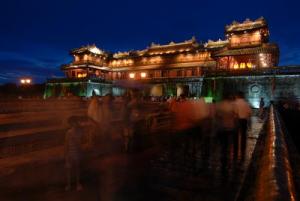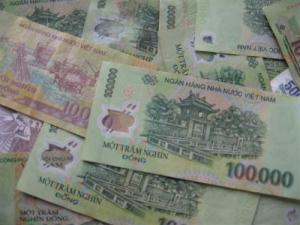Chau Ro gongs connect the living and the dead

People in the Central Highlands believe that when the gongs are played, there is an encounter between the human and spirit worlds, between the worlds of the living and the dead.
Gongs are closely associated with each stage of life. In the "blowing the ear" ceremony for a newborn child, the sound of a gong serves to declare the official acceptance of a new community member. When men and women get married, the sound of a gong during the ceremony to exchange necklaces is a reminder to the new couple to observe family and community traditions. The sound is so deep that it rings only once in each lifetime.
For Chau Ro ethnic minority people who live mainly in Ba Ria Vung Tau province, Gongs don’t produce a loud noise – just deep soft sounds that echo in people’s hearts. Such sounds are only heard during rituals worshiping the genies or praying for bumper crops and health for the people. The Gong orchestra of the Chau Ro comprises 5 gongs of various sizes. The biggest one, called the Mother Gong, keeps tune for the whole orchestra. Any Chau Ro person can play any of the five gongs. It is unknown whether Chau Ro people previously had many songs for the Gong, but now there are only a few known songs, including Welcoming Guests, Praying for Rain, and Rice Genie.
Nguyen Van Sau, an ethnic Chau Ro from Tan Chau hamlet in Ba Ria Vung Tau province has played gongs for few years, but he can play just two songs on gongs 1 to 4. He is learning to play with gong No 5, the Mother Gong. Sau says when the gongs are played the first sound is from the smallest one and then gradually moves to the bigger ones. The small one calls, the bigger one replies and when the bigger one calls, the smaller one replies.
“Chau Ro gongs are different from those of other ethnic minority groups. We use gongs of all sizes. 5 gong players play together and exchange sounds with one another. Previously, our ancestors composed different tunes for gongs and these tunes have been handed down through generations, leaving the rhythm of the gong unchanged. There are a lot of tunes, but we have not found them all,” Sau says.
For Chau Ro people, gongs are holy items. They only play gongs during ritual ceremonies to worship the Rice Genie and Forest Genie, and to pray for health. Previously, if someone were sick, sorcerers held a ceremony to drive out evil spirits and played gongs to transmit their prayers to the genies. While in some other ethnic minority groups, only men are allowed to play gongs, among the Chau Ro, both men and women can play.
The best gong player in the gong troupe of Bau Chinh hamlet in Ba Ria Vung Tau province is 65 year old Ly Thi Nhuyen, who has played gong for more than 40 years. Nhuyen plays the Mother Gong and is the most highly regarded gong player of the Chau Ro ethnic group.
Nhuyen says, the person who plays the Mother Gong must know how to play every instrument in the orchestra.
“Only selected people are allowed to play the Mother Gong,” Nhuyen says. “They must know how to play all the gongs and all the tunes, because if you play the wrong tune, the entire orchestra will get lost. The player must listen to the sound of the gong, which must be soft. I have played gongs with other ethnic troupes several times and I found that each gong has its own sound. While gongs of other ethnic groups are played to accompany dances, which are very exciting and noisy, the gongs of the Chau Ro people produce very soft sounds, as they are the sounds of our souls.”.
The sounds of gongs are the sound of the daily life of Chau Ro people reflecting their souls.









